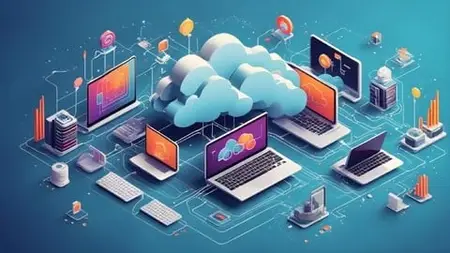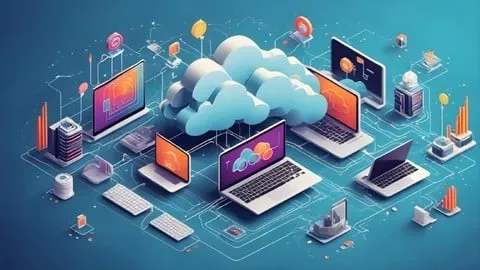Computer Networking For Beginners: How The Internet Works
Published 8/2025
MP4 | Video: h264, 1920x1080 | Audio: AAC, 44.1 KHz
Language: English | Size: 399.62 MB | Duration: 0h 58m
Published 8/2025
MP4 | Video: h264, 1920x1080 | Audio: AAC, 44.1 KHz
Language: English | Size: 399.62 MB | Duration: 0h 58m
A beginner-friendly guide to the basics of computer networks, the Internet, and how digital communication happens.
What you'll learn
Understand what a computer network is and why it matters in everyday life
Learn how the internet works—from sending emails to streaming videos
Identify the roles of servers, ISPs, and data packets in online communication
Discover the differences between wired and wireless networks
Understand key networking components like routers, switches, and modems
Explore how websites are loaded and how data travels across the internet
Learn the basics of IP addresses and MAC addresses
Understand the purpose and function of DNS (Domain Name System)
Requirements
No prior technical knowledge or experience is required
Basic computer or smartphone usage skills
A curious mindset and willingness to learn
Description
Have you ever wondered how your message reaches someone in another country in just seconds? Or how websites load, emails are delivered, and video calls happen in real-time—almost like magic? Whether you're scrolling through social media, streaming a movie, sending an email, or attending an online class, you're constantly relying on computer networks and the internet. But have you ever stopped to ask how all of this actually works? This course is designed to give you those answers in the simplest way possible—no coding, no technical background, and no confusing jargon.“How the Internet Works: A Simple Guide to Computer Networks” is a beginner-friendly course created for curious learners who want to understand the invisible systems powering the modern world. Using easy-to-understand language and real-life examples, the course explains how your device connects to others, how websites are loaded, how data is transferred in the form of small packets, and how key components like IP addresses, MAC addresses, DNS, routers, switches, and modems all work together behind the scenes. You’ll explore the essential protocols like TCP/IP, HTTP, and HTTPS that allow information to move safely and accurately across the internet. We’ll also introduce you to different types of networks such as LAN, WAN, Wi-Fi, and VPN, so you can clearly see how everything connects—literally.By the end of the course, you'll have a strong foundation in networking and internet basics, allowing you to confidently talk about these concepts, improve your digital literacy, or even prepare for further study in IT or cybersecurity.
Overview
Section 1: Introduction
Lecture 1 Why understanding networking matters today
Lecture 2 Definition of a computer network
Lecture 3 Examples from daily life (home, office, public Wi-Fi)
Section 2: How the Internet Works
Lecture 4 Wired vs wireless networks
Lecture 5 Understanding servers, ISPs, and data packets
Lecture 6 How websites are loaded
Section 3: Networking Components & Terminology
Lecture 7 IP Address & MAC Address
Lecture 8 DNS – The phonebook of the Internet
Lecture 9 Routers, switches, and modems
Lecture 10 Data packets and ports
Section 4: Network Protocols
Lecture 11 What is a protocol?
Lecture 12 Overview of TCP/IP
Lecture 13 HTTP and HTTPS
Lecture 14 FTP, SMTP, and DNS
Section 5: Types of Networks
Lecture 15 LAN, WAN, MAN explained
Lecture 16 Wi-Fi networks
Lecture 17 VPN: What it is and how it helps privacy
Section 6: Cybersecurity in Networking
Lecture 18 Common threats: phishing, man-in-the-middle, malware
Lecture 19 Firewalls and encryption basics
Lecture 20 Safe network practices
Section 7: Cloud Networking
Lecture 21 Cloud Networking & Data Centers
Lecture 22 Final Thoughts & Summary
Section 8: Continuing Your Networking Journey
Lecture 23 Career Opportunities in Networking & Cloud Computing
Lecture 24 Best Free & Paid Resources to Keep Learning
Lecture 25 Thank You & How to Apply What You’ve Learned
Beginners who want to understand how the internet and networking actually work,Professionals in digital marketing, e-commerce, or online business,Students from non-technical backgrounds,Freelancers and remote workers



